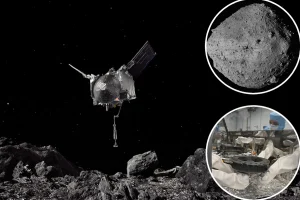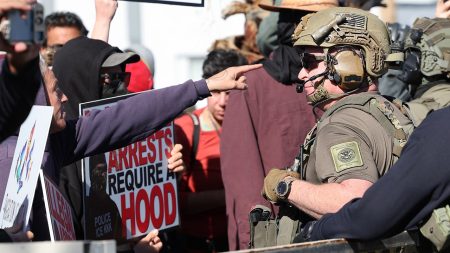Poland Intercepts Russian Drones in Concerning Border Violation Incident
Aerial Incursion Prompts Swift Military Response at NATO’s Eastern Flank
In a significant escalation of tensions along NATO’s eastern border, Poland’s military scrambled fighter jets and activated air defense systems after detecting multiple Russian surveillance drones violating its airspace. The incursion, which occurred during pre-dawn hours, represents one of the most direct provocations by Moscow against the alliance since the Ukraine conflict began. According to Polish defense officials, radar systems tracked several unmanned aerial vehicles (UAVs) crossing from Belarus into Polish territory, penetrating approximately 12 kilometers before evasive maneuvers were initiated.
“This was a deliberate act, not an accident or navigational error,” said General Tomasz Nowak, Poland’s Deputy Defense Minister, during an emergency press briefing in Warsaw. “Our response was immediate and proportionate to the threat. We successfully intercepted and neutralized the intruding drones while maintaining constant communication with our NATO allies.” The incident triggered Poland’s air defense protocols, with F-16 fighter jets deployed from the Łask Air Base and ground-based missile systems activated along the eastern frontier. Military analysts noted the precision with which the Polish forces responded, suggesting enhanced readiness levels following previous border incidents and the overall heightened security posture adopted since Russia’s full-scale invasion of Ukraine in February 2022.
Intelligence Assessment Reveals Strategic Motivation Behind Drone Deployment
Western intelligence officials, speaking on condition of anonymity due to the sensitivity of the matter, concluded that the drone incursion was not merely an accidental border violation but rather a calculated operation designed to test NATO’s defensive capabilities and response times. “This bears all the hallmarks of a Russian reconnaissance mission,” said a senior NATO intelligence officer. “The flight patterns, electronic signatures, and timing of the operation indicate a deliberate attempt to map Poland’s air defense architecture and gauge reaction protocols.” The assessment, shared among alliance members, suggests Moscow may be gathering critical intelligence on NATO’s eastern flank defenses—information that could prove valuable in both conventional and hybrid warfare scenarios.
Security experts from the Warsaw Institute for Strategic Studies pointed out that the drones appeared to follow specific flight paths designed to evaluate Poland’s radar coverage, identify potential gaps in surveillance systems, and measure the time between detection and interception. “The Russians weren’t just flying aimlessly,” explained Dr. Agnieszka Wielowiejska, the institute’s director. “They were conducting what we call ‘defense penetration mapping’—essentially creating a comprehensive picture of how quickly Poland can identify and respond to aerial threats. This information would be invaluable for any future military planning.” The incident comes amid increasing reports of electronic warfare activities along NATO’s eastern border, including GPS jamming, radar interference, and communications disruption—all hallmarks of Russia’s modern military doctrine emphasizing technological confrontation below the threshold of conventional warfare.
Diplomatic Fallout Intensifies as Poland Summons Russian Ambassador
The diplomatic consequences of the incursion materialized swiftly as Poland’s Foreign Ministry summoned the Russian ambassador to Warsaw, demanding immediate explanations for what it termed “a flagrant violation of Polish sovereignty and international law.” In a strongly worded statement, Foreign Minister Aleksander Kwaśniewski characterized the incident as “a dangerous provocation that undermines regional stability and demands accountability.” The Polish government also invoked Article 4 of the NATO treaty, which provides for consultations when a member state’s territorial integrity, political independence, or security is threatened.
Russia’s response followed a familiar pattern of denial and counter-accusation, with the Kremlin’s spokesperson Dmitry Peskov dismissing Poland’s claims as “hysteria designed to justify NATO’s continued militarization of Russia’s western borders.” Moscow maintained that no Russian military aircraft had violated Polish airspace, suggesting instead that the detected objects might have been civilian drones or even “atmospheric phenomena misinterpreted by overzealous Polish radar operators.” This stance was immediately rejected by European security officials, who cited irrefutable electronic evidence of the drones’ Russian origin, including telemetry data and communication signatures consistent with models operated by Russia’s military intelligence service, the GRU. The incident has further deteriorated the already strained relations between Moscow and Warsaw, with Polish officials warning of additional security measures and potential economic sanctions if such provocations continue.
NATO Solidarity Reinforced as Alliance Strengthens Eastern Defenses
The drone incursion has catalyzed renewed solidarity within the NATO alliance, with member states unanimously condemning Russia’s actions and pledging additional support for Poland’s border security. Secretary General Jens Stoltenberg convened an emergency meeting of the North Atlantic Council, NATO’s principal decision-making body, resulting in a joint statement affirming that “an attack on one ally is considered an attack on all” and promising “concrete measures to enhance collective defense capabilities along the eastern flank.” Within hours of the incident, the United States announced the deployment of additional Patriot missile batteries to Poland, while Germany, France, and the United Kingdom committed to increasing their participation in Baltic air policing missions.
Defense analysts observe that the Russian provocation has inadvertently strengthened the very alliance it sought to test. “Moscow may have gained some technical intelligence, but they’ve lost significantly in the strategic realm,” explained Dr. Robert Czulda, professor of international security at the University of Łódź. “This incident has eliminated any hesitation among NATO members about the need for robust forward presence in the east. We’re seeing unprecedented unity and resolve.” The alliance has accelerated plans for establishing permanent military bases in Poland and the Baltic states, reversing decades of post-Cold War force reductions in Europe. Additionally, NATO has announced expanded joint exercises focusing specifically on countering unmanned aerial threats and electronic warfare—direct responses to the capabilities demonstrated in the recent incursion.
Broader Implications for European Security and Future Russian Tactics
Security experts warn that the drone incident likely represents just one element of Russia’s broader strategy to probe for weaknesses along NATO’s perimeter while remaining below the threshold that would trigger Article 5, the alliance’s mutual defense clause. “We should expect more of these gray-zone provocations,” cautioned Jana Puglierin, director of the European Council on Foreign Relations’ Berlin office. “Drone incursions, cyberattacks, disinformation campaigns, and proxy operations all serve to test resolve, create division, and gather intelligence without risking direct military confrontation.” The incident has prompted European defense ministries to reassess their capabilities against emerging threats, particularly in the domains of counter-drone technology, electronic warfare defense, and rapid response protocols.
The broader implications extend beyond immediate military concerns, affecting energy security, critical infrastructure protection, and even civilian aviation safety across Europe. Multiple EU countries have now accelerated investment in anti-drone technology to protect key facilities, while aviation authorities have implemented enhanced monitoring systems to distinguish between civilian and potentially hostile unmanned aircraft. “This isn’t just about military defense—it’s about protecting our entire way of life from multi-domain threats,” explained Konrad Muzyka, director of Rochan Consulting, a Poland-based security firm. “Russian drone activity near our borders represents a concerning evolution in Moscow’s willingness to challenge European security norms.” As Poland and its allies strengthen their defensive posture, the incident serves as a stark reminder that the continent’s longest period of peace remains fragile, requiring constant vigilance and adaptation to emerging security challenges that blur traditional boundaries between war and peace.










